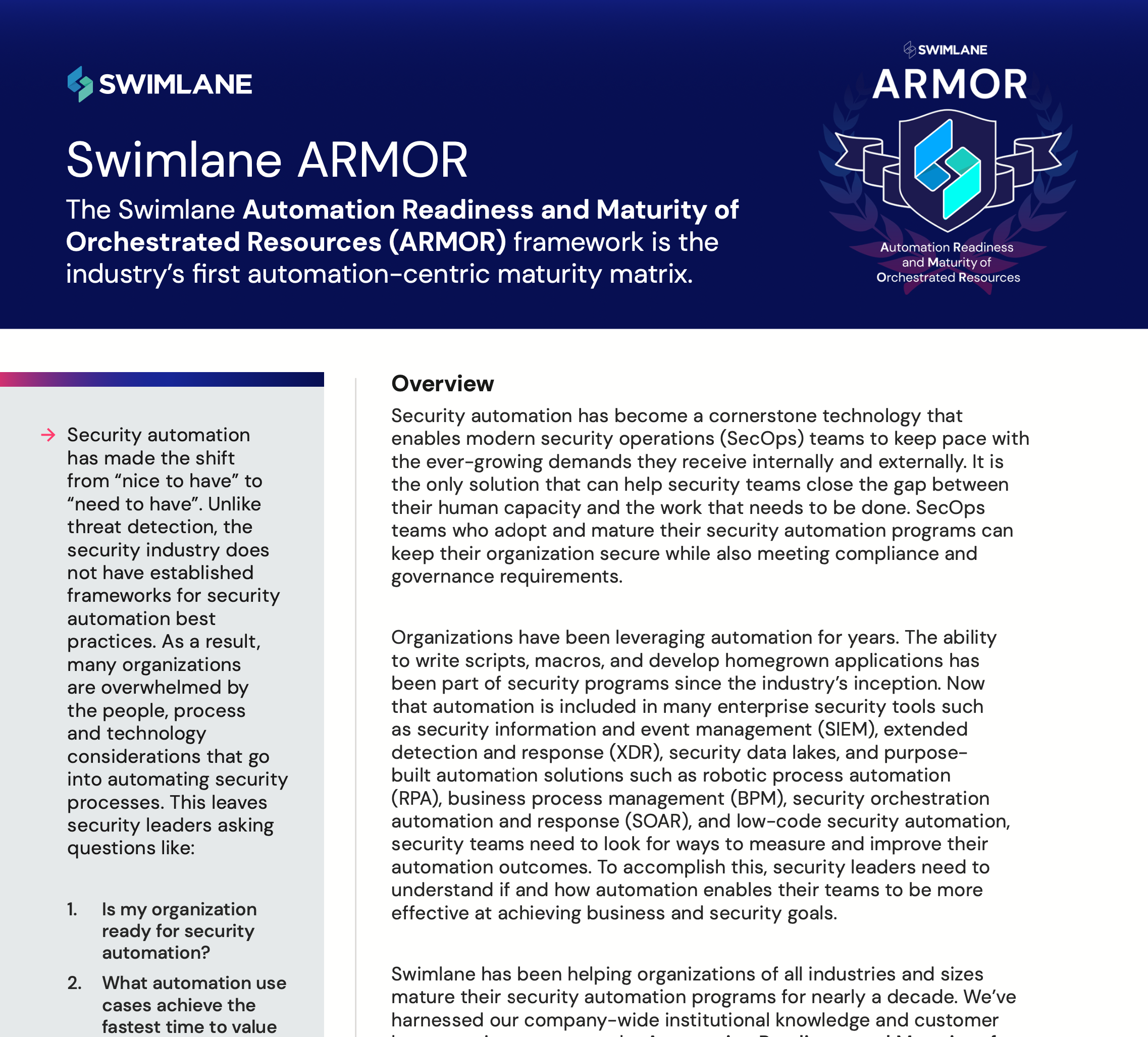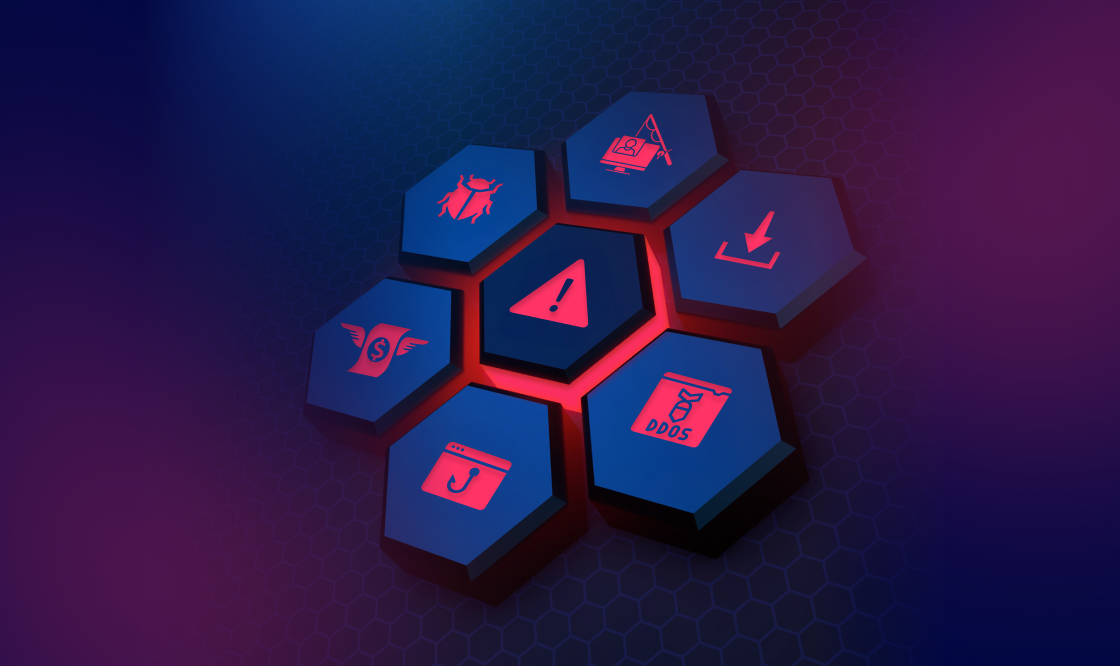10 Types of Cyber Security Attacks & How to Prevent Them
In today’s hyperconnected world, a silent battle rages behind every screen — the fight to defend against ever-evolving cybersecurity threats. Hackers are constantly refining their tactics, looking for vulnerabilities to exploit and data to steal. To protect your organization, awareness is your first line of defense. In this article, we’ll break down the 10 most common types of cyber attacks you need to know but also provide you with the right ARMOR insights and strategies to stay one step ahead.
What is a Cyber Attack?
Cybersecurity attackers share one goal: to exploit vulnerabilities in computer systems and networks in order to steal, disrupt, damage information, or gain unauthorized access. Common types of attacks may include (but are not limited to) malware, phishing, DoS, ransomware, and data breaches. These types of attacks will alter sensitive data and may destroy an organization’s hard-earned reputation. Unfortunately, no one is immune; whether you’re a business owner, a government official, a dedicated member of a security operation center (SOC) team, a medical practitioner, or a concerned individual, you’re a target.
How Do Most Cyber Attacks Occur?
Hackers employ a range of methods to bypass authentication processes. It takes one hacker to spot vulnerabilities in a computer system’s defenses and find a way to exploit them. From password cracking to Man in the Middle (MITM) attacks and system vulnerabilities in C2 attacks, there is no avenue untouched. Being malicious is their forte and attackers will not stop for anything to execute their schemes. Sometimes, they’ll even exploit our emotions to execute their malicious schemes.
We’ll now take you through the most common types of cyber attacks.
1. Malware Attacks
Let’s start with Malware, or malicious software, a catch-all term for intrusive programs. Malware, the bane of the digital realm, is solely designed to infect systems. A common example of malware is a botnet attack, a cyber issue that leverages a series of internet-connected devices with only one attacking party. The malware umbrella also includes nefarious entities like:
- Ransomware – Malware designed to deny a user or organization access to files on their devices.
- Trojans – Malware that downloads onto a computer disguised as a legitimate program.
- Spyware – Malicious software designed to enter your computer device, gather personal data, and forward it to a third party without your consent.
- Adware – Malicious software that secretly installs itself on devices and displays unwanted advertisements and pop-ups.
- Worms – Malware that replicates rapidly, spreading across devices within a network.
With the evolution of hacking, any device is susceptible to malware attacks. Malicious agents can infect any device, from laptops and PCs to tablets and mobile devices. Once they infiltrate, chaos ensues – sluggish performance, incessant crashes, and vanishing storage space.
Shielding your organization from malware attacks starts with having solid cybersecurity awareness and the right technology within your SOC to help mitigate these attacks. A quick tip – avoid clicking on suspicious ads, pop-ups, or email attachments from unknown sources.
2. Phishing Attacks
Phishing is a crafty assault that preys on human vulnerabilities. Perpetrated through emails, SMS, invoices, or websites, it takes the form of mobile phishing and oktapus phishing attacks. Once you take the bait, hackers gain the upper hand, accessing sensitive data, such as login and financial credentials, and eventually compromising your account. Stay vigilant by:
- Checking hyperlinks for any grammatical errors or misspellings
- Steering clear from email links with unknown sources
- Monitoring accounts regularly
- Keeping personal information locked up
- Avoiding dubious and malicious domains
- Installing a phishing automation solution
And if you want to help in alleviating this problem and join the larger operation of cyber attack prevention, report the incident to the Federal Trade Commission.
3. Identity-Based Attacks
Spoofing and identity attacks involve masquerading as trusted entities to victimize an organization. They use tactics like Address Resolution Protocol (ARP), email, or caller ID. Another form of identity attack is IP address spoofing, where fraudulent sources are created to copy another system, leading to identity theft, brand impersonation, and account takeover. So, it’s crucial to identify these security gaps as early as possible by:
- Creating a secure password
- Incorporating a multi-factor authentication
- Cultivating awareness through cybersecurity education
4. Denial-of-Service (DoS) Attacks
When you suddenly experience abnormal server or network traffic, these are signs that a DoS attack might be underway. DoS attacks typically target high-profile organizations and government agencies. DoS comes in various forms, but they are primarily classified into three categories:
- Flood attacks oversaturate server capacity.
- Buffer overflow attacks consume the central processing units (CPU) time – the duration the CPU spends executing program instructions or managing disk space.
- Distributed denial of service attacks (DDoS), are a form of DoS that use various computers to create network traffic. While these attacks are damaging, mitigation strategies can be very helpful. Start by automating incident responses to streamline the process. Monitoring networks, protecting endpoints and provisioning bandwidth are also suggested.
5. Code Injection Attacks
Code injection attacks involve malicious code infiltrating applications, making them difficult to detect. There are two major types of code injection and exploits:
- A command injection attack interferes with the host operating systems through arbitrary commands.
- A SQL (Structured Query Language) injection attack takes advantage of SQL commands to access database information.
Robust input validation is useful in preventing these attacks. It’s also important to leverage relevant prevention strategies like data sanitization, whitelisting user inputs, and parametrization.
6. IoT-Based Attacks
In recent years, the Internet of Things (IoT) experienced significant growth, transforming nearly every industry, but in poetic parallel, cybercrime grew too. Even with IoT’s growth, organizations still suffer from major security gaps. A 2022 report by Kaspersky showed that 43% of businesses have unprotected IoT infrastructure. Some of the common vulnerabilities in IoT include:
- Botnets
- Ransomware
- Unencrypted data
To safeguard your IoT devices from the latest cyber attacks, follow the best practices for security protection. Maintain up to date software versions and regularly update default login credentials. Additionally, consider implementing network segmentation to enhance your organization’s security.
7. Supply Chain Attacks
Another emerging cyber attack is the supply chain attack. As the name implies, supply chain attacks affect the supply chain of organizations, targeting third-party vendors and software, and infiltrating the system through an outside provider. Two of the most shocking global cyber attack issues were the SolarWinds hacking and the Kaseya ransomware attack. Following these global cybersecurity attacks, many organizations focused on emphasizing vendor security assessments, software integrity checks, and the use of cyber threat intelligence as relevant mitigation techniques.
8. Insider Threats
Although insider threats may be less common, they still exist. There are two key types, depending on the intention―malicious or negligent. The former has a conscious decision and a motive to harm, while the latter doesn’t. Indicators of an insider threat could be behavioral or digital such as:
- Unusual resource access
- Difference in traffic volume
- Irregular activity times
Ensuring robust authentication measures and providing comprehensive employee training in security best practices are your best defenses against these types of threats.
9. Social Engineering
Social engineering attacks are deceptive tactics that rely on human psychology rather than technical vulnerabilities. Instead of exploiting software, attackers manipulate individuals into voluntarily providing access to systems, networks, or sensitive data.
These attacks are often the first stage of a broader cyberattack, such as phishing campaigns, business email compromise (BEC), or ransomware deployment. They work by exploiting trust, curiosity, urgency, or fear—emotions that override logical decision-making.
Common Types of Social Engineering Attacks
- Pretexting: An attacker creates a fabricated scenario to gain a target’s trust and extract personal or organizational information. For example, posing as an IT support specialist requesting login credentials to “resolve an issue.”
- Baiting: This involves luring victims with something enticing—like a free download, a USB stick left in a public space, or a gift card offer—in exchange for sensitive information or installing malware.
- Tailgating: Often overlooked, tailgating is a physical form of social engineering where an attacker gains access to restricted areas by following closely behind an authorized person, bypassing security controls.
- Quid Pro Quo: Similar to baiting, but with a direct exchange. An attacker may pose as tech support and offer to help solve a problem in return for access credentials or system control.
10. Session Hacking
Session hijacking is a cyber attack where threat actors steal a user’s session token—typically stored in cookies—to impersonate them and gain unauthorized access. Unlike attacks that rely on stolen credentials, session hijacking exploits active sessions, often through techniques like packet sniffing, cross-site scripting (XSS), or man-in-the-middle (MITM) attacks.
Once a session is compromised, attackers can access sensitive systems, perform unauthorized actions, or escalate privileges. This type of attack is particularly dangerous in enterprise environments where users have access to critical assets.
To defend against session hijacking:
- Enforce HTTPS site-wide
- Use secure and HttpOnly cookie flags
- Implement session timeouts and MFA
- Monitor for unusual session behavior
Get Ahead of Cybersecurity Attacks with Swimlane
In today’s cybersecurity landscape, it’s crucial to stay proactive and vigilant. Threats, attackers, and vulnerabilities are continually growing in strength and sophistication, fueled by advancing technology and AI. Cyber attacks will destroy an organization’s reputation instantly. Therefore, understanding the types of cyber attacks your organization is vulnerable to and finding an automation solution, like Swimlane Turbine, to mitigate them is paramount to preventing the exposure or breach of your organization’s data.
Here at Swimlane, we combine human and machine intelligence by providing actionable insights, autonomous integrations, adaptable playbooks, and an active sensing fabric to serve as your system of record for security. Low-code is the sweet spot for security teams and we’re ready to empower your SOC team with our low-code security automation platform. With Swimlane Turbine, you can streamline your security processes, connect siloed tools, and safeguard your organization against the imminent cyber attacks in today’s cybersecurity landscape. Your modern SOAR and the future of automation is offered by Swimlane.
What are the Major Consequences of Cybersecurity Attacks?
A successful cyber attack is not just a breach; it’s a disaster that extends far beyond compromised data and crippled networks. Trust is shattered, and reputations are tarnished. Legal penalties and regulatory sanctions loom ominously, and the financial toll is staggering with recovery efforts, costing organizations thousands to millions of dollars.
Cyber Attacks FAQs
Types of identity-based attacks?
Identity-based attacks include tactics like spoofing, credential stuffing, and account takeover. These threats often target login credentials to gain unauthorized access, impersonate users, or steal data.
Examples of different cyber attacks
Examples include malware, phishing, DDoS attacks, ransomware, insider threats, IoT-based attacks, and zero-day exploits. Each targets different vulnerabilities, from human error to system weaknesses.
Most common cyber attacks
Phishing, malware, ransomware, and DoS attacks are the most common. Phishing alone accounts for over 90% of successful breaches due to its reliance on human error.
How many cyber attacks are there a day?
On average, there are over 2,200 cyber attacks per day globally, amounting to nearly one every 39 seconds, according to industry reports..
How long do cyber attacks last?
The duration varies: some attacks like ransomware execute in minutes, while advanced persistent threats (APTs) can remain undetected for 200+ days before causing damage.
Why are cyber attacks increasing?
Cyber attacks are rising due to growing digital reliance, expanded attack surfaces (IoT, cloud), AI-enhanced hacking tools, and weak cybersecurity hygiene across many sectors.

The Swimlane ARMOR Framework
SecOps teams who want to map their goals, tactics, and security automation use cases to industry standard frameworks like NIST, CMMC, CMMI or C2M2


